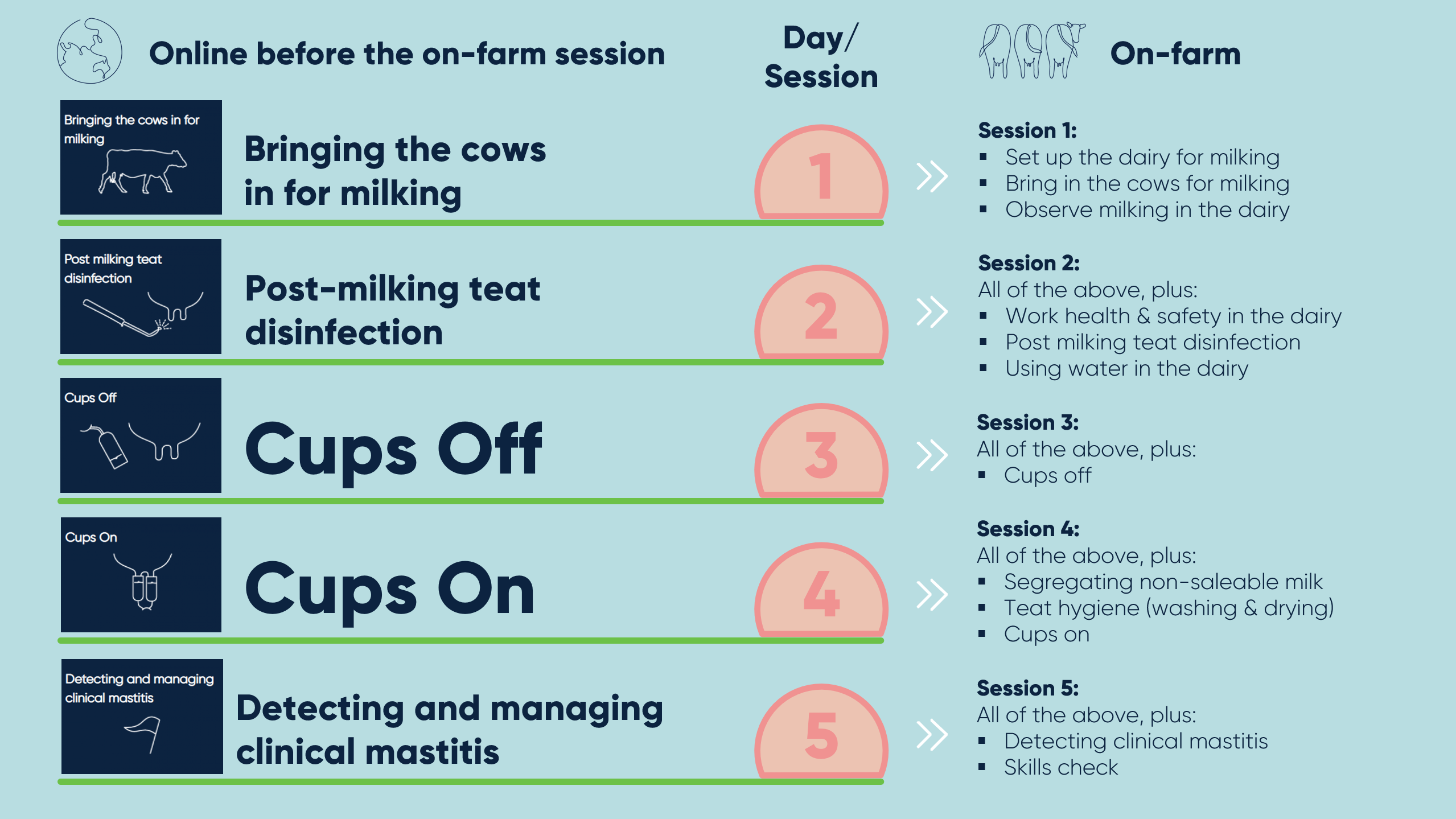Welcome to the Milking and Mastitis Management Online Program
This program is designed to support you to develop the practical skills and knowledge for successfully and safely milking cows.
The order in which you will learn the tasks will be slightly different to the usual order in which an experienced person would milk cows.We have done this deliberately.Make sure you know who your on-farm coach is,
and speak to your manager if you do not know who this is.
It is strongly recommended to complete the program over 5 days. Whilst you can complete it in a shorter period (e.g. one session each milking) you will get less out of the learning experience.
There are five individual tasks involved in the milking process that you will learn about. These include:
- Bringing the cows in for milking
- Post milking teat disinfection and
- Detecting clinical mastitis
We want you to start with the easiest tasks first. These are, bringing the cows in for milking, applying post-milking teat disinfection and taking cups off.
You will progress to the more difficult tasks such as putting cups on and detecting clinical mastitis.
The program involves the following activities:

At the end of this program, you will be able to:
1. Describe the importance of producing a quality and safe food product including the factors that influence milk quality.
2. Outline the different types of dairies that may be used to milk cows.
3. Outline the biology of the teat and udder and the health problems that cows can develop if infection control in milking is not maintained.
4. Describe the correct procedure for putting on and taking off cups for milking, applying post-milking teat disinfection and list safety risks associated with these processes.
5. Describe the detection of clinical mastitis.
6. Demonstrate safe and effective processes for bringing the cows in for milking, including recognising natural cow behaviours and minimising stress for both cows and people.
7. Demonstrate safe and effective milk harvesting (from cups on to cups off) that ensures milk quality and food safety.
8. Demonstrate safe and effective post-milking teat disinfection.
9. Demonstrate safe and effective preparation of the teats for hygiene control if required.
10. Demonstrate the detection of clinical mastitis and take appropriate action.